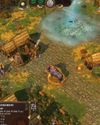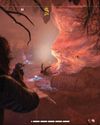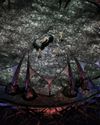
Huddled alone in a corner near bomb site A, I knew I didn’t have a chance of sneaking in and planting the package strapped to my back. The defence had just wiped out the other four members of my team, and they knew the bomb was close. They’d be waiting to dome me as soon as I stepped around a corner. So instead I activated my ult, an ability I’d been charging up for half a dozen rounds. After a tense, vulnerable few seconds, I teleported clear across the map to bomb site B and armed the bomb, adrenaline pumping at the thought of pulling off a 1v4 upset.
“Unloseable!” says League of Legends shoutcaster David ‘Phreak’ Turley, who was helping my team of journalists learn the basics of Valorant, Riot’s new competitive shooter. Unloseable for him, maybe. It was meant to be encouraging, but unfortunately Turley underestimated my ability to choke under pressure. The defence raced to my bomb site and I fumbled my other remaining abilities, throwing down smoke clouds that blinded me as much as they did them. Instead of hiding to scare off an attempted disarm, I went in – and down – guns blazing. They had just enough time to defuse my unloseable victory.
I’m still mad I blew my chance at glory, but the thrill of that moment has stuck with me. It showed how dramatically a well-timed ability in Valorant can alter a match, and made me think ‘OK, maybe Riot has something here’. Because at first, I wasn’t so sure. Hero abilities allow for clever strategies and exciting upsets, but look past them, and Riot Games has fundamentally spent the last five years building Counter-Strike.
TEAMFIGHT TACTICAL
This story is from the {{IssueName}} edition of {{MagazineName}}.
Start your 7-day Magzter GOLD free trial to access thousands of curated premium stories, and 9,000+ magazines and newspapers.
Already a subscriber ? Sign In
This story is from the {{IssueName}} edition of {{MagazineName}}.
Start your 7-day Magzter GOLD free trial to access thousands of curated premium stories, and 9,000+ magazines and newspapers.
Already a subscriber? Sign In

A New Dawn - The rise, fall and rise again of PC Gaming in Japan
The so-called 'Paso Kon' market (ie katakana's transliteration of 'Pasonaru Computa') in Japan was originally spearheaded in the 1980s by NEC's PC-8800 and, later, its PC-9800.

MARVEL: ULTIMATE ALLIANCE
Enter the multiverse of modness.

SLIDES RULE
Redeeming a hated puzzle mechanic with SLIDER

GODS AND MONSTERS
AGE OF MYTHOLOGY: RETOLD modernises a classic RTS with care

PHANTOM BLADE ZERO
Less Sekiro, more Wo Long: Fallen Dynasty

STARR-MAKING ROLE
Final Fantasy XVI's BEN STARR talks becoming a meme and dating summons

THIEF GOLD
Learning to forgive myself for knocking out every single guard.

HANDHELD GAMING PCs
In lieu of more powerful processors, handhelds are getting weirder

FAR FAR AWAY
STAR WARS OUTLAWS succeeds at the little things, but not much else shines

FINDING IMMORTALITY
Twenty-five years on, PLANESCAPE: TORMENT is still one of the most talked-about RPGs of all time. This is the story of how it was created as a ‘stay-busy’ project by a small team at Black Isle Studios